LONGSTER
CONCEPT: CAN A LONG "LONGSTER" BE BUILT AS A
LEGAL PART 103 ULTRALIGHT?
Updated October 17, 2007
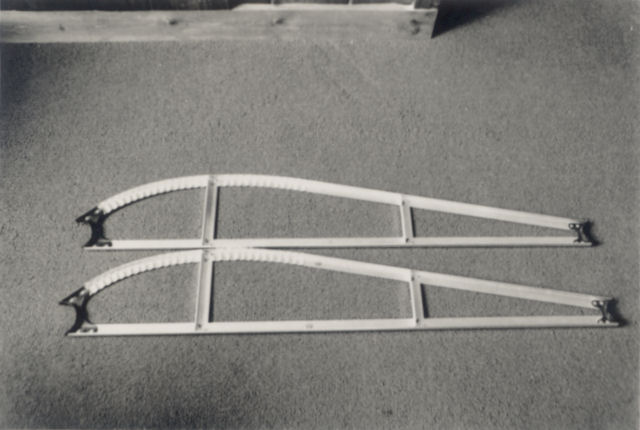
This is the style of wing rib used on Ed Fisher's ultralight and light plane designs (thanks to William Wynne for pointing this out to me). I had been toying with two different wing construction types, both of which use aluminum tubes for the spars, but which use different techniques for the ribs. The ribs on the Affordaplane use foam ribs with thin wood capstrips on which to cement the wing fabric and the Graham Lee Nieuport replicas use small diameter aluminum tubing to establish the rib shapes. However, the Fisher technique looks simple, light, and strong.
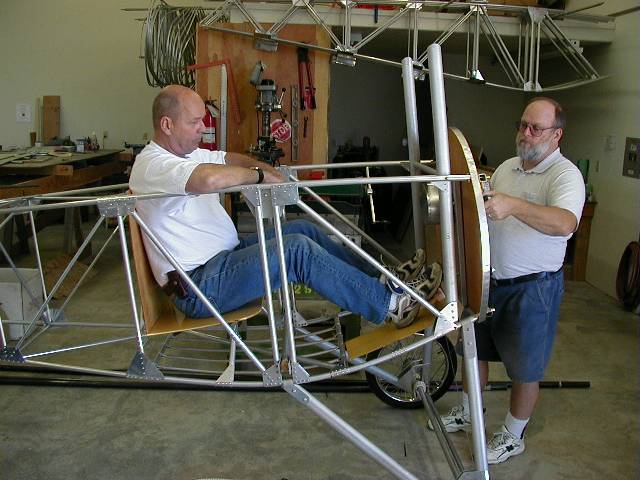 This is the Graham Lee Nieuport replica fuselage and it uses different diameters of aluminum tubing joined with gusset plates and pulled rivets. Again, simple and light and a very nice modern adaptation of the technique used by Les Long on the Longsters.
This is the Graham Lee Nieuport replica fuselage and it uses different diameters of aluminum tubing joined with gusset plates and pulled rivets. Again, simple and light and a very nice modern adaptation of the technique used by Les Long on the Longsters.
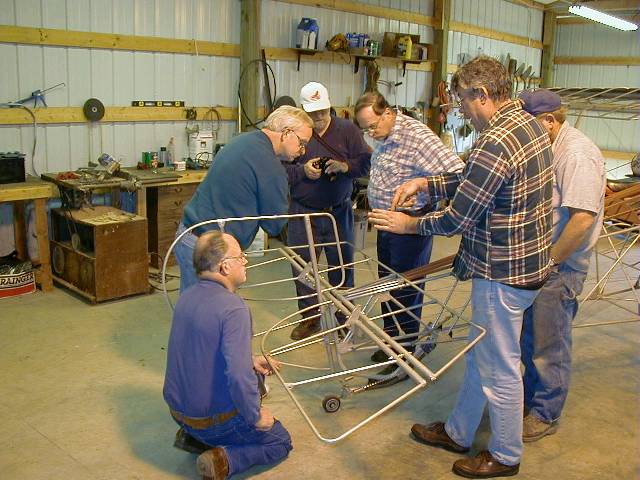 A view of the Nieuport tail feathers. Very, very similar shapes and sizes to the Longster. Many of the details and tubing sizes will transfer directly to the Longster, with a few simplifications due to the Longster's lighter gross weight.
A view of the Nieuport tail feathers. Very, very similar shapes and sizes to the Longster. Many of the details and tubing sizes will transfer directly to the Longster, with a few simplifications due to the Longster's lighter gross weight.
Original concept - August 4, 2007
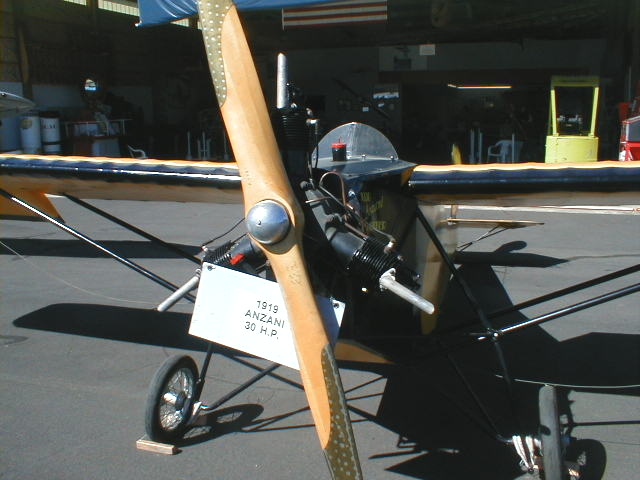
Back in 1930 or so, Oregonian Les Long designed a series of light sport aircraft that he named "Longsters". The design concept and construction details are well documented in the 1930s "Flying and Glider Manuals", including the Anzani Longster (replica shown above is from the Oregon Aviation History Museum in Cottage Grove) and the Henderson Longster. The former was powered by a 3-cyl. rotary Anzani engine and the latter by a converted 4-cyl. inline Henderson motorcycle engine. My concept focuses on the Henderson version, which was a high-wing as opposed to the Anzani version, which was a mid-wing.
Under my concept, power for an ultralight version would be the 1/3 Corvair engine known as the "UltraVair", which would produce something I'll call the "UV Longster". Horsepower and weight would be just about ideal.
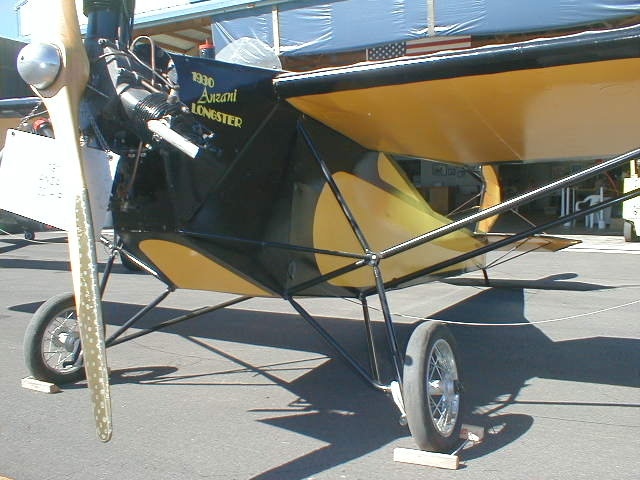 While many of the framing details and construction techniques used in the Longsters are common to them all, there are significant differences. For example, the Anzani Longster above shows that the wings are strut braced, while the Henderson version has a "kingpost" of sorts, with aircraft cable bracing of the wings. The landing gear design is similar, as is the triangular-section empennage framing.
While many of the framing details and construction techniques used in the Longsters are common to them all, there are significant differences. For example, the Anzani Longster above shows that the wings are strut braced, while the Henderson version has a "kingpost" of sorts, with aircraft cable bracing of the wings. The landing gear design is similar, as is the triangular-section empennage framing.
Of the two versions, I believe the Henderson to be the better candidate to make Part 103 limitations on weight. I also believe that the framing geometry and joint clusters lend themselves to modern ultralight construction techniques using aluminum tubing with aluminum plate gussets and pop-riveted construction.
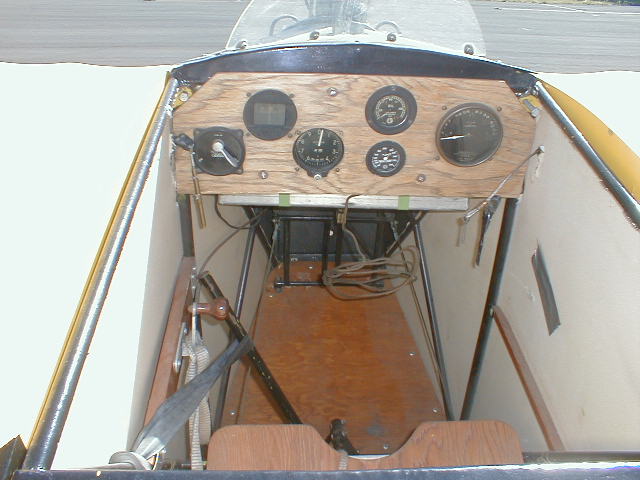 The cockpit of the Anzani Longster. Simple, but it could be simpler still through the use of aluminum where appropriate (probably not the landing gear legs and items like that), but certainly other components and framing.
The cockpit of the Anzani Longster. Simple, but it could be simpler still through the use of aluminum where appropriate (probably not the landing gear legs and items like that), but certainly other components and framing.
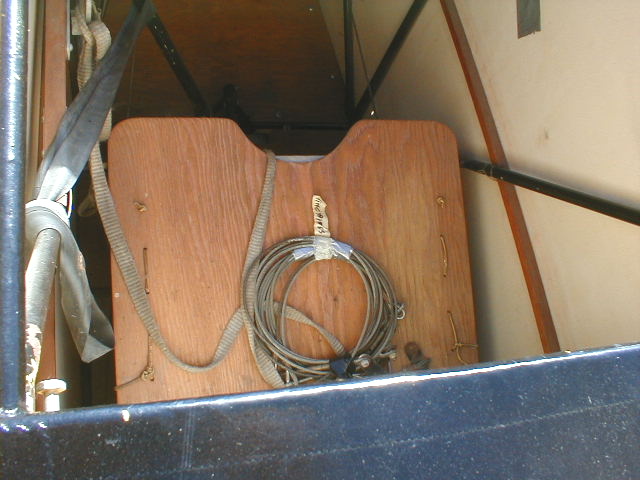 Another shot of the pilot's seat. Novel method of attachment: the seat is laced to the seat framing.
Another shot of the pilot's seat. Novel method of attachment: the seat is laced to the seat framing.
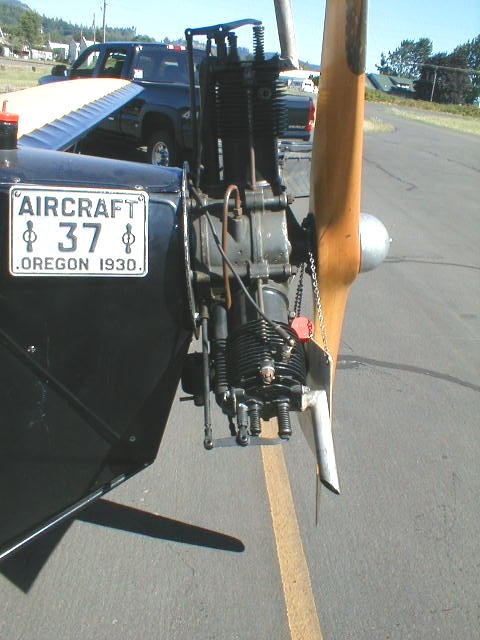 Closeup of the Anzani with its open valve train. Fuel tank is in the top cowling but would have to be in or over the wing centersection in the Henderson version with high wing.
Closeup of the Anzani with its open valve train. Fuel tank is in the top cowling but would have to be in or over the wing centersection in the Henderson version with high wing.
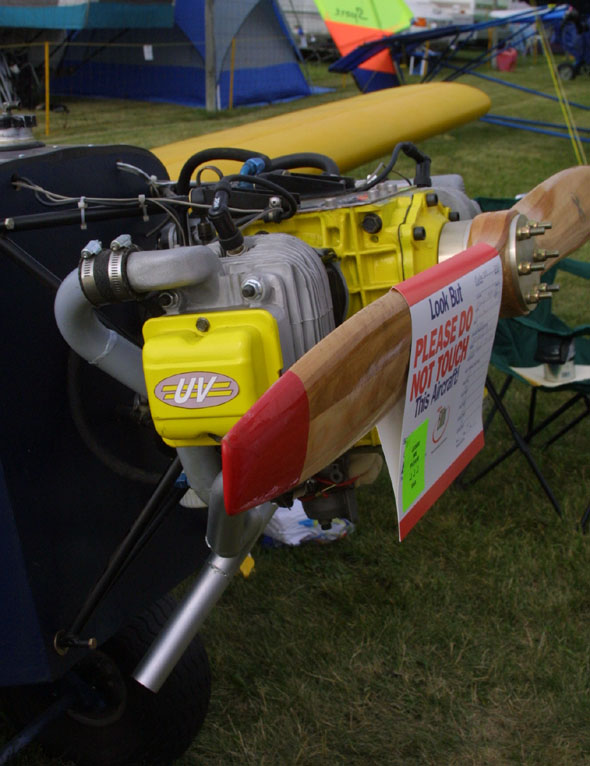 The UltraVair conversion... 1/3 of the 6-cyl. Corvair = 2 cylinders.
The UltraVair conversion... 1/3 of the 6-cyl. Corvair = 2 cylinders.
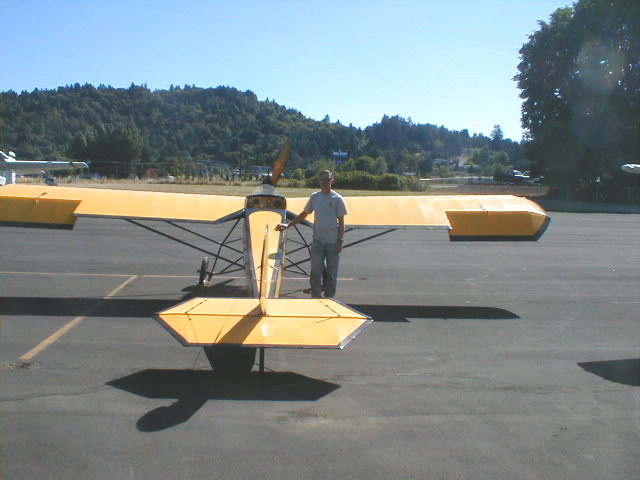 View with me standing by the Anzani Longster shows scale. This version has roughly a 12' wing on each side while the Henderson version adds 3' to each wing to make them about 15' long each. With a triangular fuselage section at the top, the root ends of the Henderson Longster's wings butt together at the mounting bolts, which makes its wingspan just about 30 ft.
View with me standing by the Anzani Longster shows scale. This version has roughly a 12' wing on each side while the Henderson version adds 3' to each wing to make them about 15' long each. With a triangular fuselage section at the top, the root ends of the Henderson Longster's wings butt together at the mounting bolts, which makes its wingspan just about 30 ft.
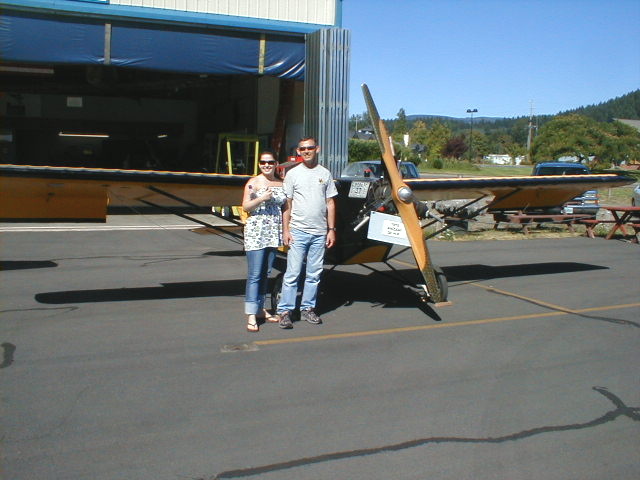 Me with my youngest daughter Bethany and the Longster, no doubt wondering if there might ever be a UL-UV Longster? It would be a fun and interesting exercise to work on such a project!
Me with my youngest daughter Bethany and the Longster, no doubt wondering if there might ever be a UL-UV Longster? It would be a fun and interesting exercise to work on such a project!
If you're not building yet,.........................why not?




